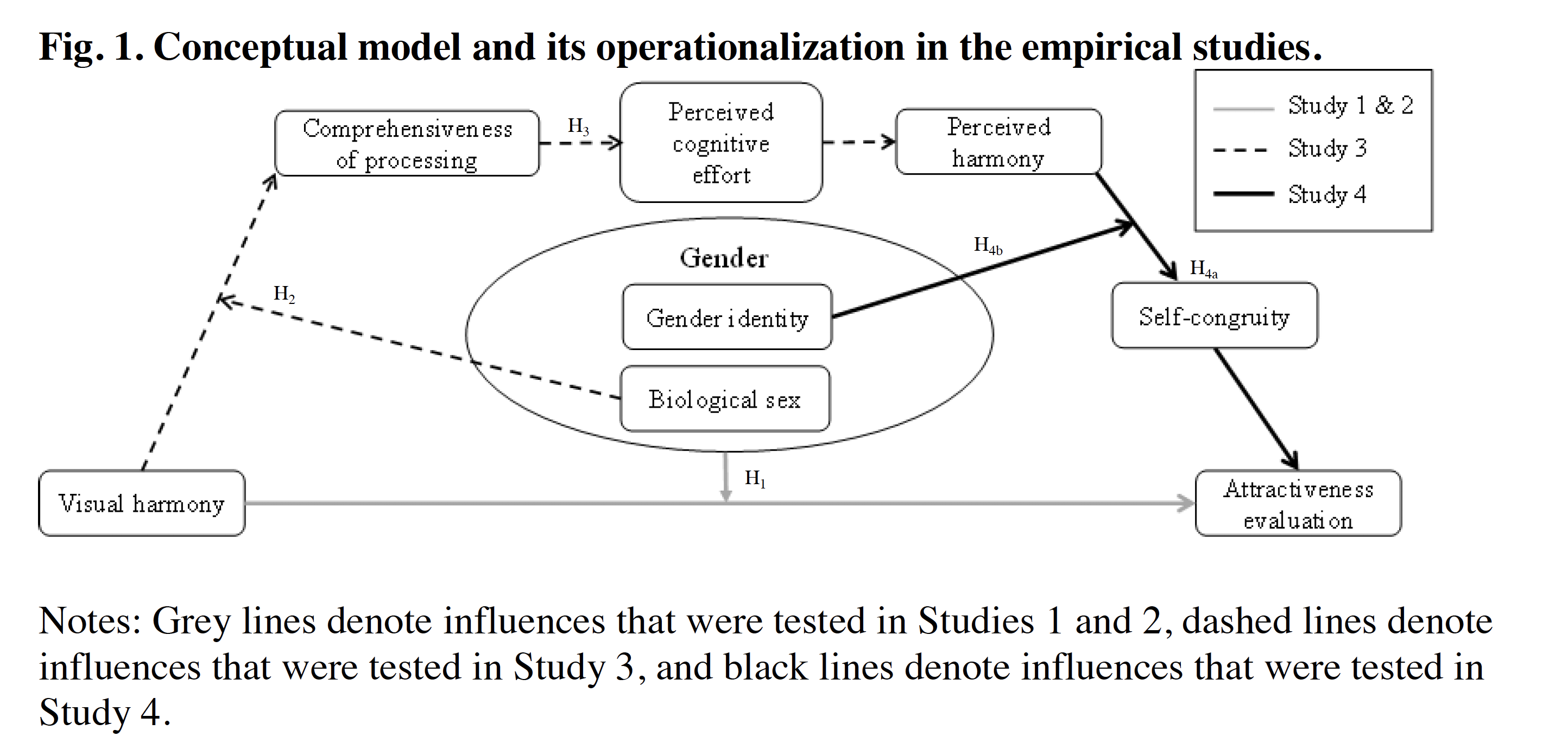Have you wondered; are there any systematic differences in design preferences for males and females? If yes, is this based on biological gender or gender identity? Is there any research on this subject? If yes, recent research by Kristina Nickel, Ulrich Orth, and Minu Kumar that was accepted at the International Journal of Research in Marketing (IJRM) will provide you some answers.
Marketing practice reflects a hybrid perspective on the importance of consumer gender in designing visuals. While one side adopts the view that gender is a major influencer of design outcomes, the other take the opposite view as reflected in a trend towards non-gendered designs. Managers who used to tailor marketing artifacts to biological sex become concerned about possibly overlooking the impact of gender identity. In direct response to this uncertainty, this study explored whether the distinction between biological sex and gender identity makes a difference in the processing and evaluation of visual harmony in marketing visuals. The findings clarify that both biological sex and gender identity play a role in consumer response to visuals, albeit at different processing stages. More specifically, they find that biological sex plays a moderating role in the early phase of visual harmony perception due to men's and women's differential processing abilities, whereas gender identity plays a significant role later in the more reflective phase of visual harmony evaluation.
Across four studies they find a robust effect of biological sex on responses to visual harmony suggesting that marketers may wish to consider creating designs that are highly harmonious (i.e., more symmetrical, more rounded, and more balanced) for females and less harmonious (i.e., more asymmetrical, more angular, and more imbalanced) for males. However, as visual processing becomes more involved, practitioners should not underestimate the effects of gender identity at stages when designs are associated with meanings and self-identity.
The finding that the influence of gender identity increases as cognitive involvement increases suggests that, for convenience and impulse purchase (including purchases involving time-constraints), involving unconscious automatic processing, traditionally gendered designs are likely to be a good strategy to employ. For deliberate purchases involving highly cognitive processing (e.g., cars), however, a more nuanced approach is recommended to increase congruity between gender identity and the design. In other words, when tailoring high involvement products to consumers (both males and females) with a feminine gender identity, designers should focus on high harmony in the design (i.e., round forms and lines, high symmetry). In contrast, when tailoring high involvement products to masculine gender identities, designers should focus on low harmony in the design (i.e., angular forms and lines, low symmetry) to achieve greater attractiveness. The VW beetle can be seen as an example for targeting females with a masculine identity by designing the classic women’s car more ‘masculine’ (acute-angled windows, higher-contrast interior design). Social media appear to be prime sources for obtaining corresponding gender identity data.
Similarly, in communicating their offerings, managers may more varied strategies to design and convey the value of high involvement versus low involvement products. According to the findings, low involvement products can be designed according to consumer biological sex, whereas high involvement and highly self-expressive products should be designed to be congruent with consumers’ gender-identity. Marketing managers and designers can thus improve the effectiveness of visual design by matching marketing visuals to the gendered self-image of their target audience, rather than adopting the stereotypical “pink it and shrink it” approach. Doing so will likely require minor modifications to the visual design of products and packages rather than more costly changes to the manufacturing process.
Taken together, this study informs us that marketers and designers should have a more nuanced understanding of how both biological sex and gender identity design preferences.
Reference: The article is in press. Until such time that IJRM publishes it and has an issue and volume number, please cite the related conference paper information provided below.
Nickel (Nee Haberstroh), K., Orth, U., & Kumar, M. (2018). Gender Differences in Response to Visual Harmony: Why and When?. Association for Consumer Research European Advances.

Just Business:
It is everything that is Just but nothing that is "business as usual". Given all the concentrations of power and wealth in society, the rapid movement of a very few corporations controlling the levers of power (oligarchic structure of the economy), and rampant injustices that workers (of every color but especially minorities) being subjected to by their employers, a significant portion of my research will move towards the idea of Just Businesses. This involves developing business designs, business model designs, and organizational structures that flatten power and wealth inside an organization while while empowering the average worker and providing them a seat at the table. As you read future blog posts about my research on this topic, the reader can glean important insights. In the meantime, I am posting a talk by Ruha Benjamin who is an Associate Professor of African American Studies at Princeton University, where she studies the social dimensions of science, technology, and medicine. She spoke at the CIty Arts and Lecture Series recently.
Here is that talk: https://www.youtube.com/watch?v=frqac_nEeQ4
